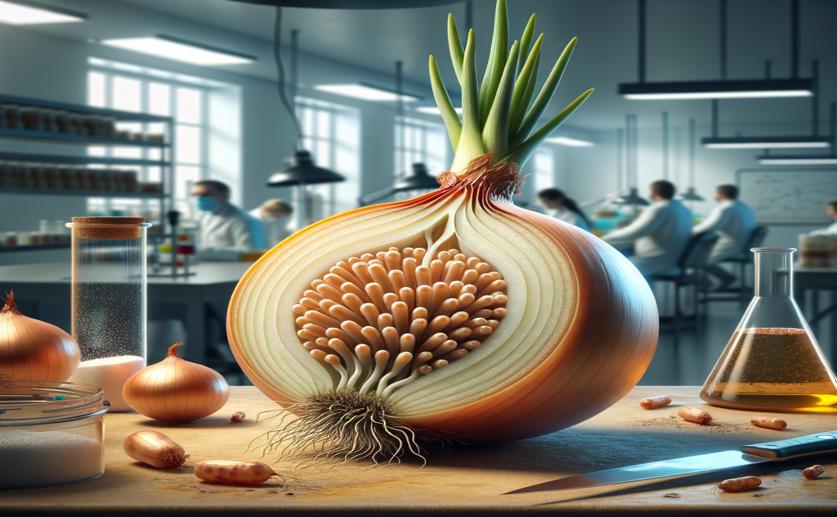
New Bacteria Species Found in Organically Grown Onions
Jenn Hoskins
6th June, 2024

Image Source: Natural Science News, 2024
Key Findings
- Researchers from the Max Rubner-Institut discovered a new bacterial strain, Bosea rubneri sp. nov., from an onion sample
- Genetic and phenotypic analyses confirmed that this strain is a new species within the genus Bosea
- This discovery enhances our understanding of the genus Bosea's diversity and its ecological roles, especially in agricultural contexts like onion storage
AgricultureBiotechPlant Science
References
Main Study
1) Bosea rubneri sp. nov. Isolated from Organically Grown Allium cepa.
Published 5th June, 2024
https://doi.org/10.1007/s00284-024-03717-6
Related Studies
2) Analysis of 1,000+ Type-Strain Genomes Substantially Improves Taxonomic Classification of Alphaproteobacteria.
3) Oxidation of thiosulfate by a new bacterium, Bosea thiooxidans (strain BI-42) gen. nov., sp. nov.: analysis of phylogeny based on chemotaxonomy and 16S ribosomal DNA sequencing.
Journal: International journal of systematic bacteriology, Issue: Vol 46, Issue 4, Oct 1996
4) Bosea caraganae sp. nov. a new species of slow-growing bacteria isolated from root nodules of the relict species Caragana jubata (Pall.) Poir. originating from Mongolia.



 28th May, 2024 | Jim Crocker
28th May, 2024 | Jim Crocker